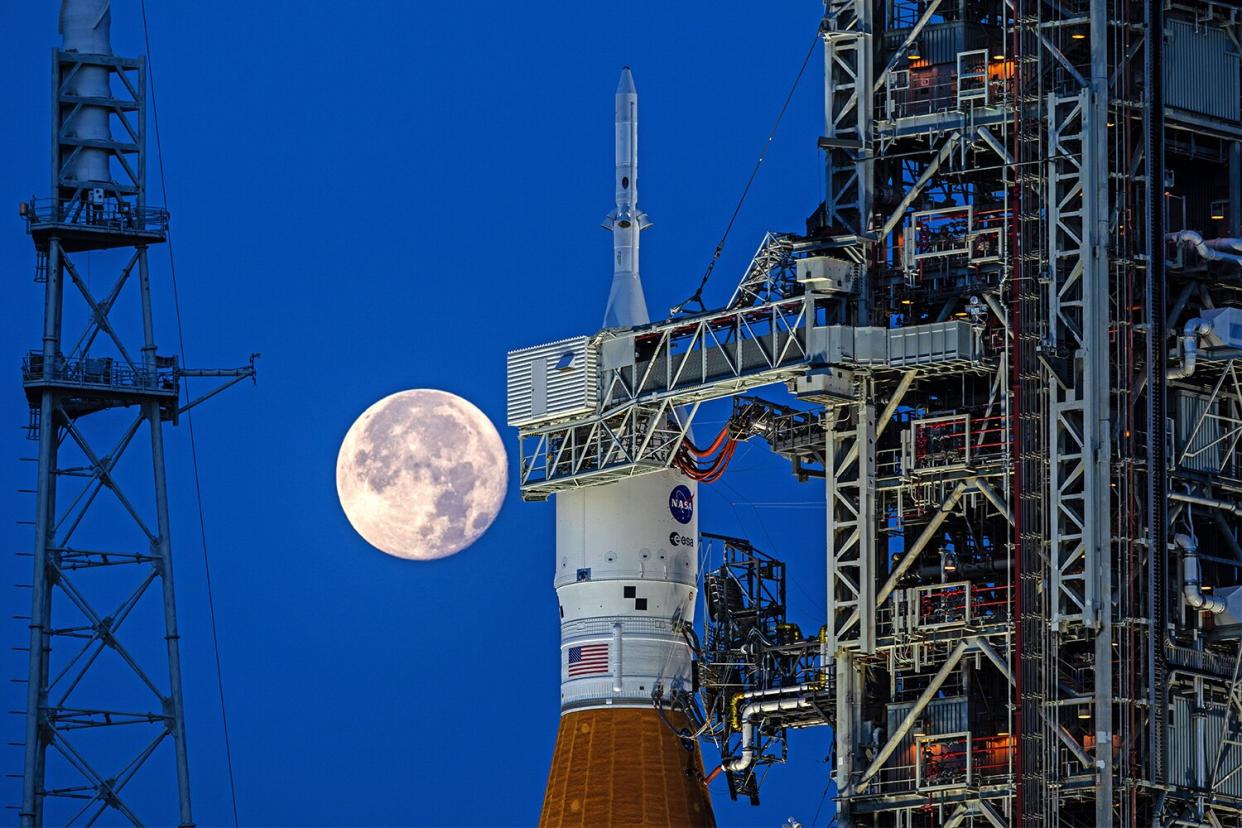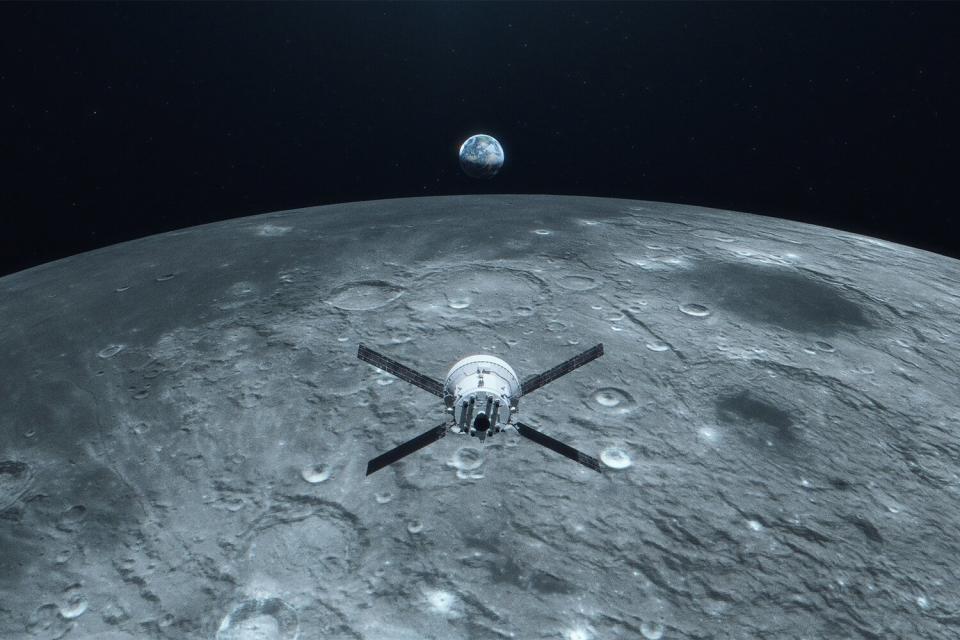NASA Launches Artemis 1 Mission, Paving Way for Astronauts' Return to the Moon

After multiple delays, NASA's mission to the moon is finally underway.
Early Wednesday, NASA launched the Artemis I mission from the Kennedy Space Center in Florida, over two months after its initial attempt was scrubbed due to engine issues. Days later, the unmanned flight test was delayed again due to a fuel leak. The anticipation of Hurricane Ian caused an additional delay.
At the heart of the mission are the Orion, NASA's reusable spacecraft, and the agency's Space Launch System (SLS), the first rocket in half a century designed to fly astronauts to the moon.
Three test dummies were onboard as the rocket began its debut flight, the AP reported.
According to NASA, the Orion and SLS will fly 280,000 miles from Earth, and thousands of miles past the moon, during a six-week journey. The spacecraft is expected to make splashdown in the Pacific Ocean on Dec. 9.

Ben Smegelsky/NASA
Once the Orion reaches the moon, the spacecraft will stay in orbit for about six days to collect data and allow mission controllers to test the spacecraft's performance. It will then set a path back to Earth.
During this time, the spacecraft will have remained in space "longer than any ship for astronauts has done without docking to a space station and return home faster and hotter than ever before," NASA said on its website.
RELATED: All About NASA's Artemis I Mission, Including How to Watch the Mega Rocket Launch to the Moon

Liam Yanulis/NASA
Artemis 1 is the first of a series of missions planned by NASA in the coming years to expand "human existence to the moon and beyond," per the space agency.
The Artemis mission was named after the Greek goddess of the moon, who is also the twin sister of Apollo, the god of sun and light. Apollo was also the name given to the series of missions that eventually led to astronauts Buzz Aldrin, Neil Armstrong, and Michael Collins reaching the moon in 1969.
RELATED: Everything to Know About the Full Moons in 2022
For the second Artemis mission, NASA plans to send astronauts on a different trajectory than the current mission with the goal of testing "Orion's critical systems with humans aboard," according to their website.
In future missions, NASA plans to land the first woman and first person of color on the moon, which could happen as soon as 2025, per National Geographic. These missions would be the first time NASA sent humans to the moon since Apollo 17 in December 1972.
RELATED VIDEO: Dad's Ham Radio Hobby Leads to Daughter Calling Astronaut in Space — Hear Their Adorable Chat!
The objective of the Artemis missions is to create a long-term, sustainable lunar presence — while also serving as a foundation to eventually send astronauts to Mars, in addition to the moon.
Coverage of the Artemis I space launch was shown on NASA's website, as well as YouTube, Twitter, Facebook, LinkedIn, Twitch, Daily Motion, Theta.TV, and NASA's App.

